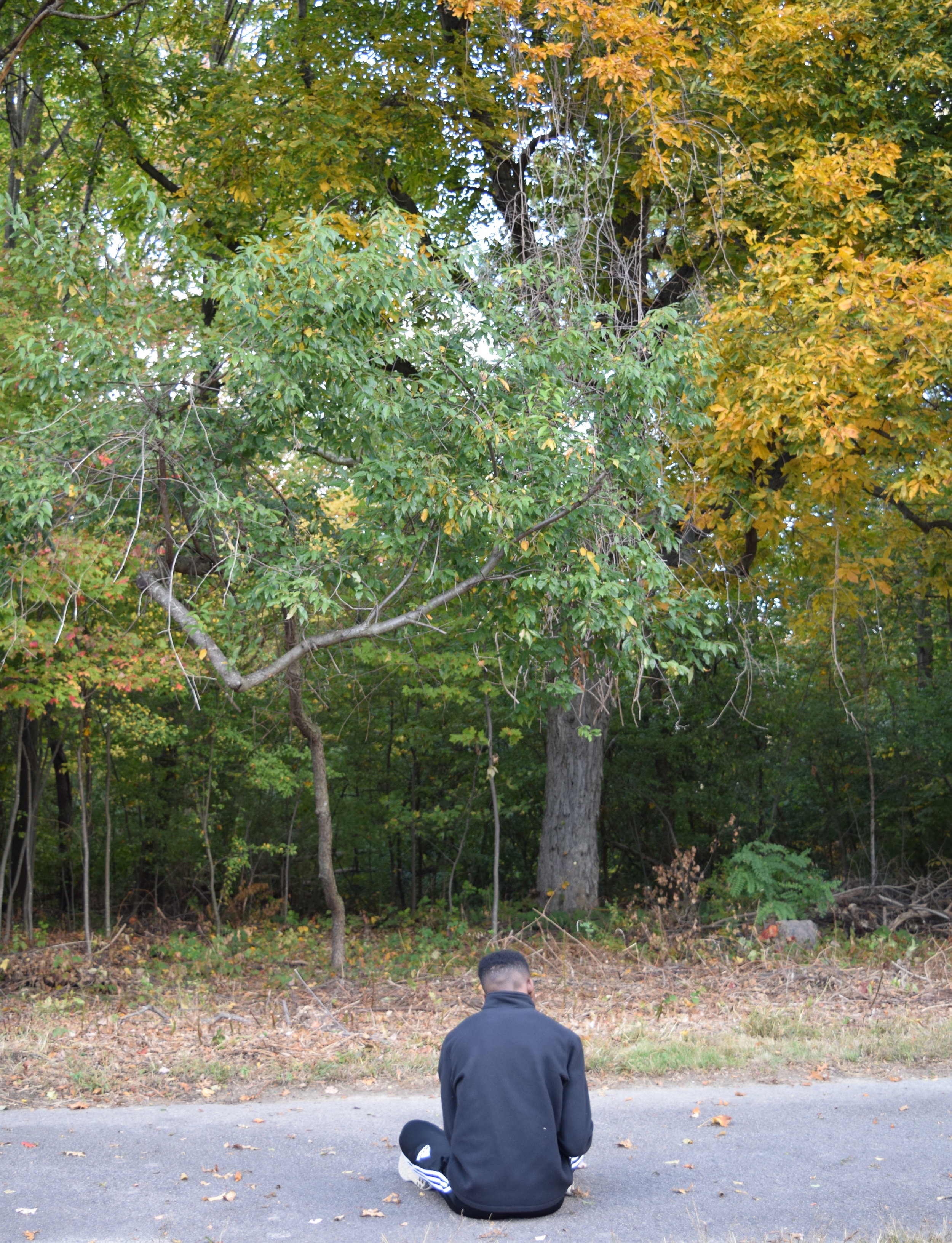Taoism, the Tao of Pooh, and Trees
A guest post by Humanities teacher Sarah Parker-Geller
Meridian’s Division 4 Humanities class, in conjunction with their study of Taoism, has been conversing with trees this fall. In the Tao of Pooh, written by Benjamin Hoff, the author links prominent ideas from Taoism to the Winnie the Pooh series, and uses the characters within the cartoon to help explain Taoist thought. One Taoist tenet is that one can appreciate, learn from, and work with whatever happens in everyday life. From the Taoist point of view, the natural result of this harmonious way of living is happiness. Near the end of the book, Hoff writes, “Do you want to be happy? You can begin by being appreciative of who you are and what you’ve got…As Lao-tse wrote, ‘A tree as big around as you can reach starts with a small seed; a thousand mile journey starts with one step.’”
With that quote as our inspiration, students made the short journey to Franklin Park where they each chose a tree that spoke to them in some way; maybe it had a funky branch coming off of one side, maybe it grew in the shade of larger trees, or maybe it stood alone, away from others. Students will be writing about their trees all year long, documenting the changes they notice as the seasons change. The time in which the students write also gives them an opportunity to only focus on one moment in time. Junior and senior year is often filled with major projects, college applications, and stress. Our tree journals offer students a chance to leave all this behind for a while and focus on something bigger than themselves, something that is right in front of them. To that end, it is our hope that students come away happy, appreciating the world around them.
Sabina, a senior, said of her experience, “I love having a time when I can sit and observe nature. My tree has become much more of a being now. I really understand the power of Taoism when I sit and write about my tree.” Kenny, a junior, commented that, “It is interesting to look at something so intensely that is already there. I see those trees all the time, but now I see them in a different way.” At the end of the year, the student’s journals and experiences will be used in a collective artistic project that will represent the unique journey each of the students has taken with their tree.






